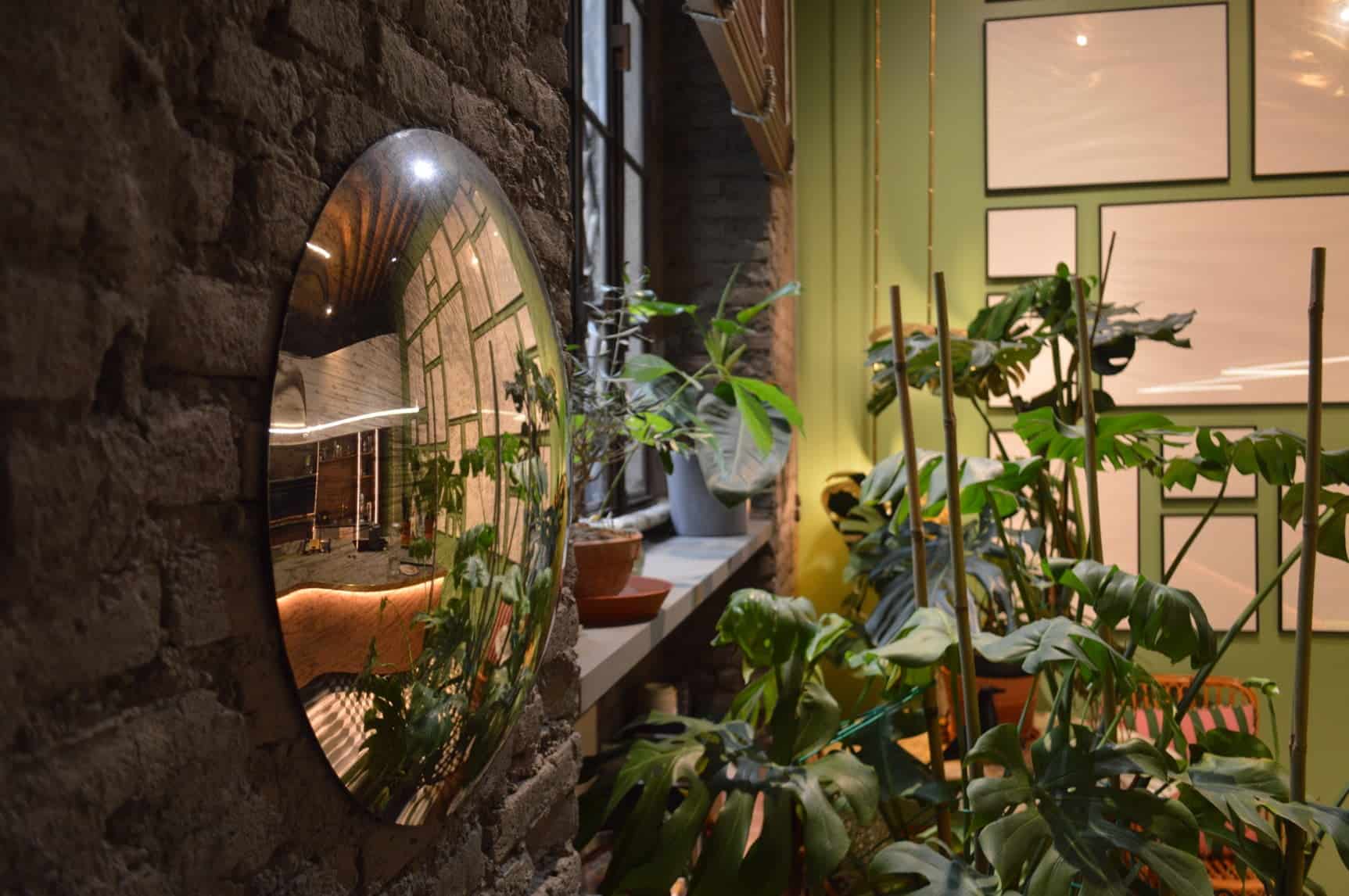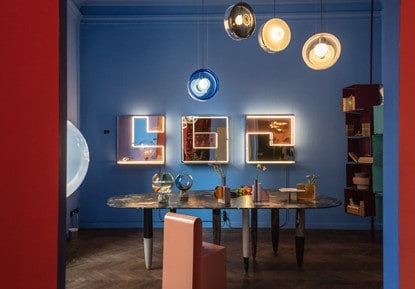True innovation often begins by looking to the past for inspiration. As we stand at the beginning of 2021, it is important to draw inspiration from the lessons that 2020 taught us if we are to purposefully strive for pioneering interior design in the year ahead.
Few people know this as well as Cape Town-based interior creative and behavioural specialist, Kim Williams. Kim believes that only by reflecting on our design influences, can we ground our individual styles and lay the foundation for true innovation.
Here are Kim’s top design trends to take from 2020 and how they are likely to grow and evolve in 2021:
Biophilia

Bringing nature into our spaces provides us with a kind of visual comfort. In the professional world, a lot more greenery in workspaces shows that our need to reconnect with nature has been intensified by the COVID pandemic. The concept of biophilia embraces connecting with nature on all levels, from organic materials to earthy tones and colours, natural elements permeate our spaces as we try to recreate a connection with nature. One key element of this trend is our relationship to our wellbeing. In Europe, the concept of biophilia is evolving to incorporate a mindful awareness of ourselves in our spaces as integral to our health. With the pandemic, our increased focus on our health and how we take care of ourselves in our spaces, is far more at the forefront of our minds as we become more aware of the importance of being and not just being productive.
Modern retro

As a vintage lover, the modern retro style is one of Kim’s favourite styles to have emerged in 2020. She adores how this style centres around incorporating elements of nostalgia, which has always been a core tenant of her designs. The modern retro style has signature lovely, lush elements, like gold taps and classic patterns, that make spaces timelessly stylish and classic. More than that, the new modern retro puts an interesting twist on the idea of vintage as it draws inspiration from more recent decades, like the ’70s and the ’90s and takes inspiration for pop culture such as PC and video games. The beauty of the old has evolved; we see the use of pattern and the return of velvet and classical elements of retro being presented in a modern way.
Nostalgic design

One of Kim’s most recognisable design signatures is bringing in elements of emotion into a space to help people engage and connect with their environment. By creating an experience with nostalgic items, you can induce emotion, enhance productivity, or imbue a sense of relaxation. In light of the pandemic, we have naturally started to design with nostalgia, putting more emotive meaningful objects into our spaces. These objects are not necessarily chosen for their aesthetic quality either, but rather for the emotional significance they carry and how we connect with them. In 2021, this will continue but in a more light-hearted manner as we begin to incorporate more playfulness into our spaces and fulfil our need to bring colour and fun into our lives.
Metallics

How beautiful were the metallics of last year? Golds, coppers, and silvers all glistening and adding glam to our spaces. 2020 undoubtedly saw metals take off, especially here in South Africa, and some noticeable trends include black taps and coloured sanitaryware. 2021 is sure to continue to incorporate metallics into our more modern spaces.
Patterned tiles

Pattern tiles are an amazing tool when creating a classic retro style. They are a great way to incorporate colour and we have seen beautiful designs come from Europe in 2020. In general, designers are incorporating imperfection into their designs as they embrace the beauty of hand-crafted items, and this new appreciation for imperfection has resulted in more use of handmade ceramic tiles. Our need to connect on a human level with our imperfections is more important now than it has ever been given the surge of artificial intelligence across industries.
New minimalism

At the beginning of the lockdown in 2020, there was an intense decluttering process many of us went through and our need to have less stuff and have more space in our spaces introduced minimalism into our everyday lives again. Organic, highly tactile materials that encourage us to engage more with specific objects in our homes make our spaces enriching environments to be in. Minimalism is built on sustainable, intentional living and an emotional relationship with your home. However, new minimalism is not sparse like its predecessor, but rather about reducing the number of material things we have down to what we really need. Where classical minimalism was about the absence of things, new minimalism is about choosing what to retain in a space which speaks to how important mindfulness is in this new style.
Maximalism

Ironically, in 2020 we also saw the emergence of minimalisms polar opposite, maximalism. Constructed around a ‘more is more” mentality, this style uses every element of our space as an opportunity to make a statement, grab our attention, and entertain our mind’s eye so that every room becomes an experience rather than just a room. It’s a powerful style, full of colour, pattern and boldness, and it is certainly interesting that we have seen the simultaneous emergence of both sides of the spectrum. Kim believes that this is because as individuals we are becoming more appreciative of our personal styles rather than simply following other’s choices.
Looking ahead for 2021
Biophilia

Biophilia will continue to evolve into mindful living. We will see the extensive use of natural and organic materials as a way to make our spaces organically imperfect. An increasing and evolving awareness on our part, where we are very aware of every element in our environment, is likely to motivate more of us towards better choices concerning sustainable living and our impact on the environment.
The new modern retro

The new modern is very relevant for our South African context given our outdoor lifestyle as it embraces simplicity, brightness, and the line between indoor and outdoor living. Incorporating beautiful ceramics, more woods, and texture into our space, this style is excellent as a guiding tool to create simple, beautiful, and elegant spaces. It’s a modern, clean, and fresh approach that will continue to evolve from a place of wanting to connect with nature but in a simple decluttered way.
Colour

The importance of colour is hard to understate. It will continue to play an important role as we become more mindful of our colour selections. From very soft hues to create a sense of comfort and connection, to very bright colours in modernism, and playful living to create excitement. The beauty of bright reds combined with vibrant blues, harnesses the power of contrast to create impact. By mixing and matching objects from various decades, the impact is reminiscent of art deco trends and style. The use of colour will be about creating those experiences and being very specific about how you design colour into your space. As a medium, colour is extremely powerful, and Kim hopes that we will see a lot more boldness, akin to what we saw in the ’80s, in 2021.
Playful living

The evolution of maximalism, playful living invites us to mix and match bold colour, textures, patterns, and unconventional shapes. It is about what lies beyond functionality and invites us to explore and play in our spaces. It will incorporate pop culture from the ’80s and ’90s. Driven particularly by Instagram’s influence over our perspective on spaces and interior design, it is about evolving our thinking to push creativity and fantasy beyond the usual into an escapist realm, creating optimism and joy in our spaces.
The new world of work

A move towards self-managed schedules, limited team meetings and smaller offices makes it imperative that we truly focus on the function we need our spaces to fill, as well as the emotions they induce in 2021 and beyond. What is clear, is that people are prioritising their happiness within a space, and that casual, playful, and flexible workspaces facilitate a sense of wellbeing, creativity and therefore productivity. As we go into 2021, comfort, happiness and fluidity are set to be our guiding factors as the lines between our homes and our offices blur.
Rethinking ownership

The new generation is not as materialistic as the generations past and they are rethinking ownership. Kim predicts that we are no longer going to have a product-driven environment but rather a service-driven one. This is likely to present in design services, such as being able to rent furniture and rotate it out as the seasons and styles change, rather than having to buy and keep pieces. It will also be a way of embracing a more sustainable recycling perspective.
The importance of silence

Another aspect of being in our spaces is that we have become very aware of noise given all the activity that happens within the context of the home. For example, understanding the impact of white noise in a work from home model and how it affects your ability to work and relax. Even in workspaces, as we become more mindful, the need for silence will play more of a role in the way we design.
Looking back, the trends that stand out for Kim in 2020 from a design perspective were intertwined with our need to reconnect with nature, and to find comfort, beauty and engagement in our homes and workspaces, given that we spent the year disconnected from each other and the world.
As we launch into an uncertain 2021, our spaces will need to be designed to provide us with many different sensations from relief to connection, relaxation to invigoration, which is a challenge that poses truly unique, and hopefully fruitful, circumstances for designers the world over.
For more about Kim Williams and to sign-up for her blog visit www.kimwilliams.co.za. Follow Kim on Facebook and Instagram @kim_williams_design.


